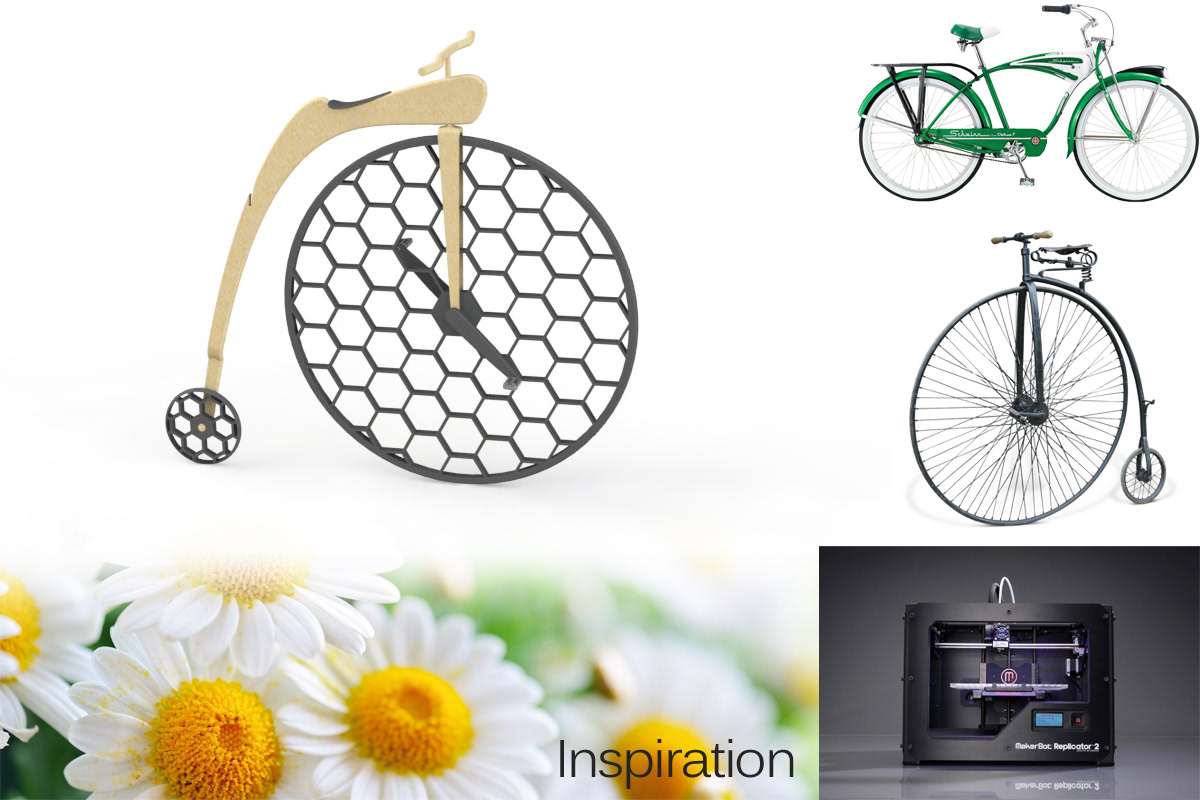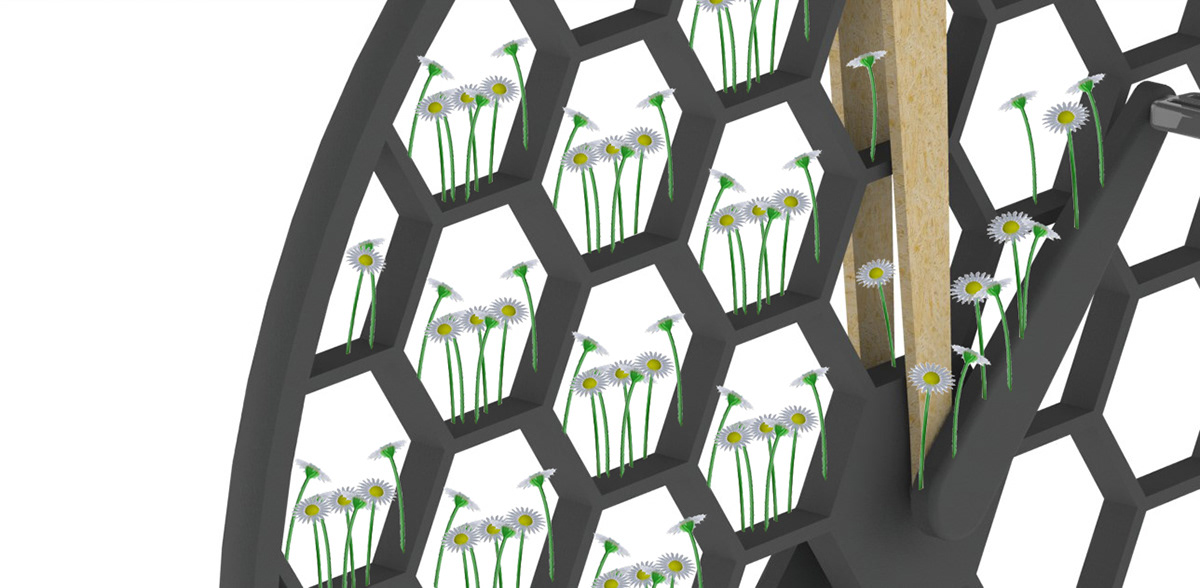The Penny Silva
Disposable bicycle for the year 2040
Grabcad/Makerbot competition
This project was an entry to the Makerbot Replicator 2 Desktop 3D Printer Challenge, a competition which was run on-line by Grabcad. It was particularly appealing as the first and second prizes were Makerbot 3D printers, worth over €2,000 each. There were also runner-up cash prizes, so I was eager to submit an entry.
The Challenge was to design a vehicle for the year 2040. The brief was quite broad, concepts could be for air, surface, water, space with the only requirements really being that your design could be 3D printed on a Makerbot, with minimum wall thicknesses, maximum footprint, and appropriate model formats.
From the outset it was obvious that most of the submissions (which were all public) would be ultra-futuristic concepts powered by exotic, comic-book style technologies. Flying machines, futuristic cars and space vehicles seemed to constitute the vast majority of entries, which numbered 151 by the close of the competition. Many of the submissions were modeled and rendered to an extremely high standard, and it was clear there were many designers and engineers who were putting a lot of effort into their creations. In order to stand out from the crowd, I’d have to take a different approach to my concept.
Before brainstorming ideas, I considered the city of 2040; a large, high-rise sprawling jungle of metal, glass and concrete, with minimal greenery or consideration for the natural environment. I’m not exactly an eco-warrior, but I do like the outdoors and the thought of a cityscape void of nature seemed depressing. At this stage none of the concepts seemed to even attempt to address this issue, so designing from an environmental viewpoint seemed like a prime opportunity to make my concept unique. This desire to have my idea stand out from the ultra-futuristic, super-powered environmentally oblivious concepts led me to my final design…
The Penny Silva is a 3-D printed disposable bike, styled in the fashion of the classic Penny Farthing bicycles of old, for use in the urbanised centres of towns and cities of the year 2040. The bike would be printed using natural, bio-degradable cellulose for the frame, and a bio-degradable flexible polymer for the wheels and seat (links below). The bike starts breaking down rapidly after being printed, with a maximum usable life of 1 week. After this point, the bike’s structure begins to break down and disintegrate.
The theory is that 3D printing machines will be in every household or business by the year 2040. If someone wants to travel a relatively short distance, they can print off one of these bikes, which prints fully assembled and ready for use, with flower seeds (daisy, daffodil etc) embedded into the frame of the bike during the printing process. The user then travels to the desired destination, and discards the bike when it is no longer needed. After a period of no more than a week, the entire bike begins to decompose, exposing the pre-embedded flower seeds to the elements. After watering (or rain) the seeds begin to grow, creating a natural beauty in the undoubtedly grey, metallic cityscapes of the year 2040.
This concept is all about contrast. The contrast between the metal, glass and concrete materials of future cites and buildings, and the natural, degradable cellulose of the bike frame coupled with the delicateness of the budding flowers. The contrast between sleek, smooth future cars and buses, powered by electricity or petrol, and the man-powered, slightly awkward looking Penny Silva bike which harks back to the very early days of bicycle design.
The Penny Silva name originated from combining the words “Penny Farthing” and the word “Silva”, which means “growth” in Latin
Seed-impregnated cellulose is used for the frame, a natural, rapidly bio-degradable material which is 3D printed and has no ill effect on the natural environment as it degrades. Seed-infused flexible Polymer is used for the wheels, which, coupled with the hexagonal construction, offers the rider a degree of comfort while cycling. The design is very slim, meaning time spent 3D printing is minimised. The use of snap-fits means the bike is easily assembled. A bag hook is cut into the frame to provide somewhere for rucksacks/laptop bags to attach to while cycling.

Style
The “Penny Farthing” form is quite attractive and classic. The proportions of the front to the back wheel, and the large sweeping arc the frame must make to join the two are quite visually appealing. Given the time period in which these bikes were popular, this form is undeniably classic, and would provide a welcome contrast to the modern and futuristic architecture and design of the heavily urbanised cities of the year 2040. Unlike more conventional style of bicycle, there are minimal moving parts. This is because the pedals are directly linked to the driving wheel, meaning there are no chains, cogs or gears to contend with, all of which are possible failure points for a product which will be fully 3D printed in a rapidly bio-degradable material. The honeycomb shape to the wheels has two purposes. The first is so that the wheels can absorb some impact and provide a small level of comfort for the user. The second is so to provide a structure which, when the flowers bloom, will provide numerous platforms for the flowers to grow from. The frame is a nod to the style of imitation petrol tank found on some classic Schwinn bikes. The golden ratio was used to determine the spacing between the front and back wheels, and also the size of the rear wheel.




